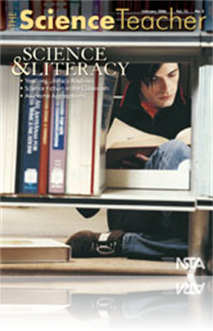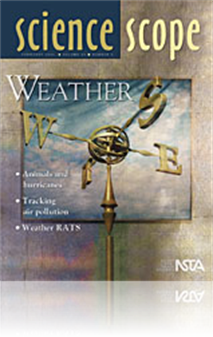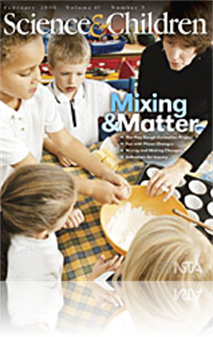All Resources
Journal Article
Investigating an Aerial Image First
Conventional instructional routines used to introduce optics concepts can be ineffective at developing an in-depth conceptual understanding that allows students to apply optics concepts to simple, but real, optical systems. To correct this proble...
Journal Article
Science Sampler: Torricelli, Pascal, and PVC pipe
Two giants of science who led the way to our understanding of atmospheric pressure and fluids were Evangelista Torricelli and Blaise Pascal. By conducting experiments inspired by those of Torricelli and Pascal using today's rugged and affordable plum...
Journal Article
Science Sampler: Inquiry with earthworms
Earthworms wiggle their way into your science curriculum in this fun and hands-on activity. Students experiment with earthworms to gain a better understanding of the process of scientific inquiry and hone their research skills using books and the Int...
Journal Article
Try DECIDE, a web-based, teacher-friendly, integrated approach designed to stimulate learning by allowing students to make decisions using scientific weather principles (DECIDE is available free of charge, see Resources). This learning unit integrate...
Journal Article
How can we use inquiry to examine why animals live in groups? The answer is to use models, which are more feasible than working with hundreds of test subjects. This article describes a Standards-based directed inquiry into overwintering biology and b...
Journal Article
Every Day Science Calendar: February 2006
This monthly feature contains facts and challenges for the science explorer. ...
Journal Article
Teacher's Toolkit: Two-tiered assessment
Developing good instruments that can be used to assess what students really know about scientific content is one of the most difficult tasks facing teachers in middle school classrooms today. However, two-tiered tests can be an effective solution to ...
Journal Article
A New World View, a composition of pale blue glass and steel, is an homage to the most famous scientist in modern history -- Albert Einstein. View this masterpiece for yourself by visiting the World Year of Physics (WYP) team's website that includes ...
Journal Article
Science Shorts: The Dynamics of Dissolving
Dissolving is as much about the substance doing the dissolving (the solvent) as it is about the substance being dissolved (the solute). Dissolving depends on the interaction between the molecules of solvents and solutes. This article looks at the m...
Journal Article
Enabling All Students to Learn Science
Communicating with students in today's high school science classroom is challenging for teachers because the majority of them speak only English. Many of their students, however, do not speak English as their primary language. One way to bridge the g...
Journal Article
What Happens to Animals during Hurricanes?
Student curiosity provides a springboard for discussions ranging from weather, to conservation, to biology, and concern for animal welfare. Teachers can use these real-world events that spark students' interest to integrate content and interdisciplin...
Journal Article
Methods and Strategies: Evidence Helps the KWL Get a KLEW
This article discusses the Know-Learning-Evidence-Wonder (KLEW) chart, a modification on the Know-Want-Learn (KWL) chart. This new chart was developed to align itself with the National Science of Education Standards while also helping to alter the p...
Journal Article
Ask the Experts -- February 2006
In this month's Ask the Experts column, the following questions are addressed, "Why does the Moon show phases when viewed from Earth, but Earth always looks the same from the Moon, with only the top half illuminated?" and "Why are there two tides per...
Journal Article
Science Fiction & Science Literacy
Science fiction is read not only for enjoyment, but because it digs into scientific concepts with imagination, creativity, and a thorough appreciation of consequence. It has so much to offer in terms of good science and how science works, while at th...
Journal Article
Literacy in Science: A Natural Fit
Reading is an essential part of science literacy, but what, when, and how can we incorporate reading in the science classroom? To address these questions and bring reading back into the science classroom, the authors designed four inquiry-based, quar...





